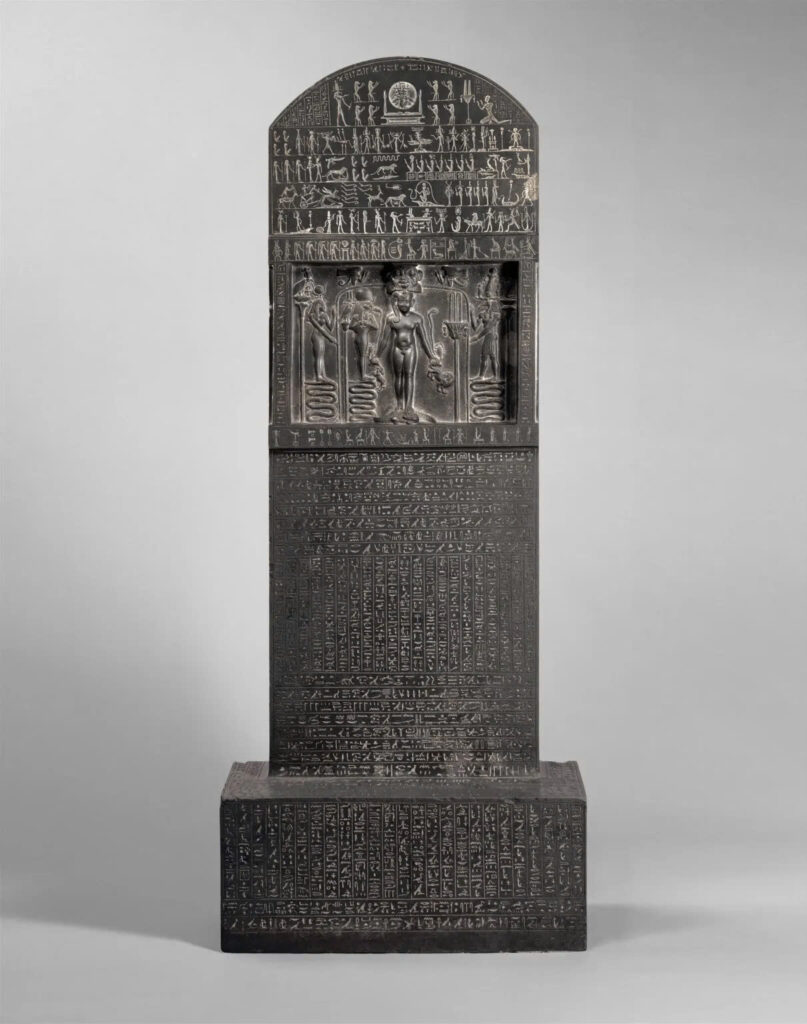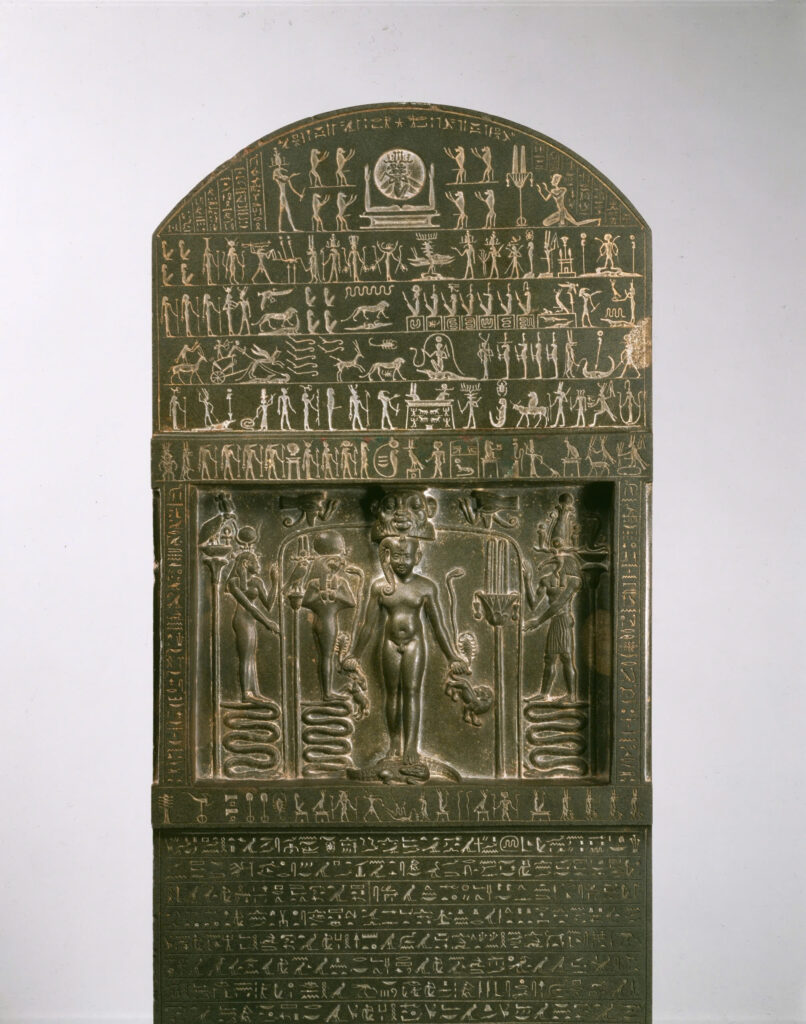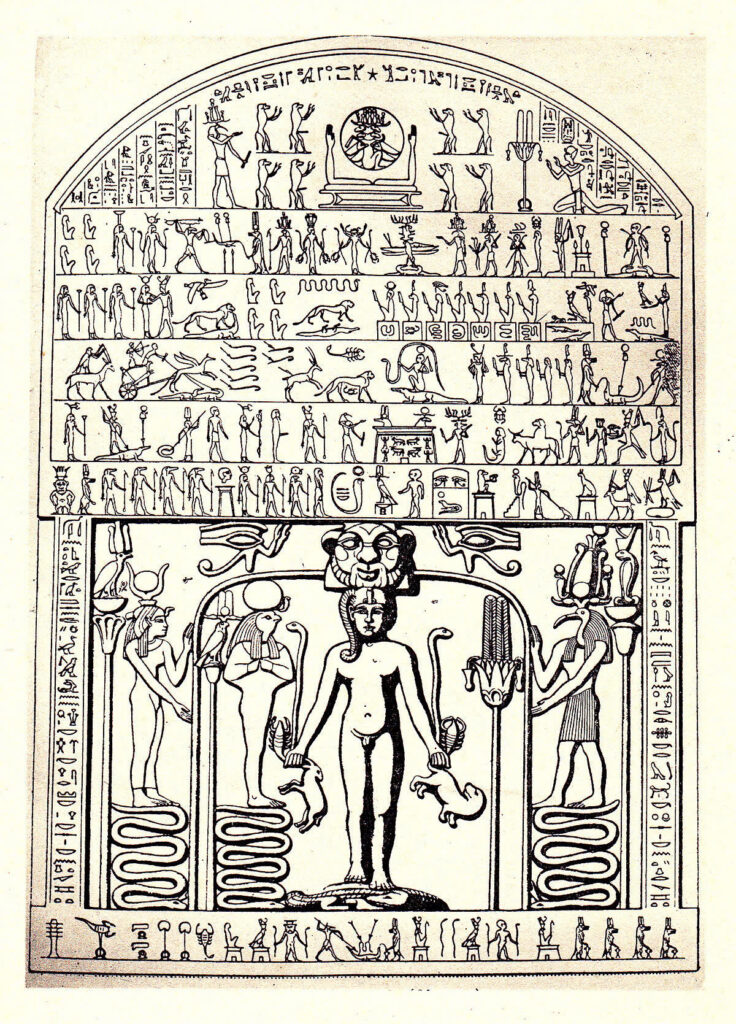The Power of the Cippus of Horus

In the twilight of ancient Egypt’s native rule, a remarkable artifact was created – the Metternich stela. This intricately carved stone tablet, also known as the Cippus of Horus, stands as a testament to the Egyptians’ deep belief in magic and divine protection.
A Priest’s Gift to the People

Commissioned by a priest named Esatum, this stela was no mere decoration. It was a powerful tool, meant to be displayed in a public area of a temple where anyone could access its healing powers. The dark, hard stone was skillfully carved, its surface alive with images and hieroglyphs that promised protection against venomous bites, wounds, and the illnesses they caused.
The Divine Drama

The stela tells a captivating story – a mythical precedent for its healing power. It speaks of a time when Isis and her son Horus were hiding in the marshes. Young Horus fell ill, and in her desperation, Isis cried out to the sun god. The sun itself stopped in the sky, and Thoth, the god of wisdom, was sent to help.
Horus Triumphant

At the center of the stela, Horus emerges in high relief, almost a statue in his own right. He stands nude, with a sidelock of youth, grasping snakes, scorpions, and even wild animals – symbols of his mastery over danger. At his feet lie crocodiles, further emphasizing his power.
A Pantheon of Protectors

Surrounding Horus are other deities – Thoth with his ibis head, Isis herself, and even the dwarf god Bes, all lending their protective presence. They stand upon coiled snakes, holding the walls of a reed hut that shelters representations of other gods.
The Sun’s Nightly Journey
From Darkness to Rebirth

The top of the stela depicts the sun’s perilous nightly journey through the underworld. At the very peak, we see its triumphant rebirth, greeted by adoring baboons and the last native Egyptian pharaoh himself – Nectanebo II.
The Last Pharaoh’s Legacy
Nectanebo II, who commissioned this stela around 360-343 BC, was destined to be the final indigenous ruler of ancient Egypt. Though he fought valiantly against the Persian empire, he was ultimately defeated, fleeing to Upper Egypt where his fate remains a mystery.

Today, the Metternich stela resides in the Metropolitan Museum of Art, a lasting reminder of ancient Egyptian magic, artistry, and the enduring human hope for protection and healing.

